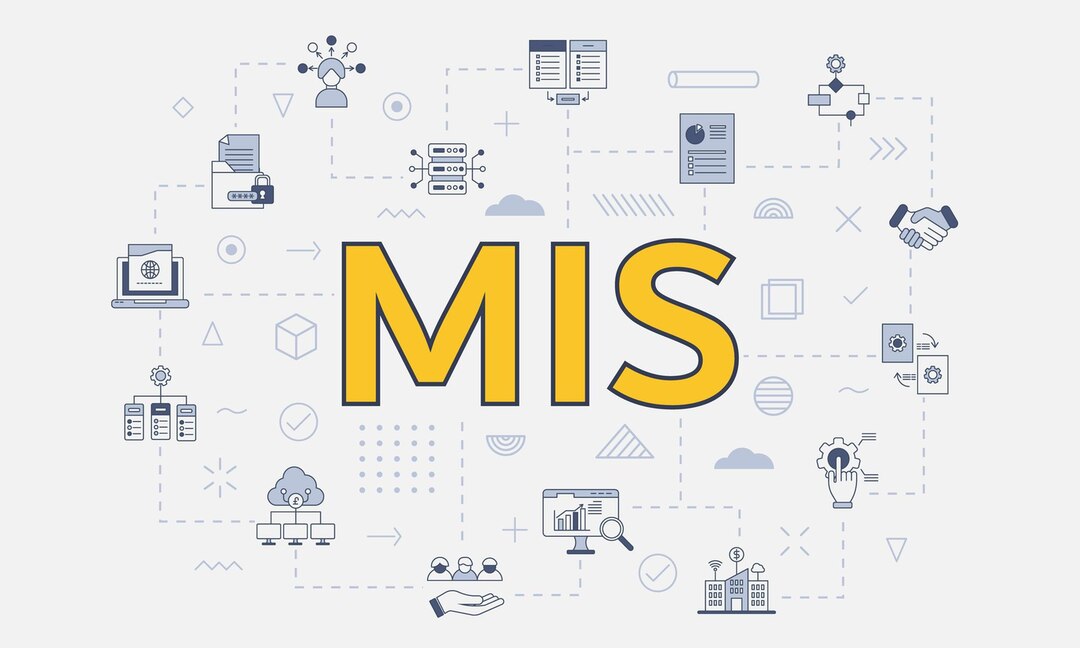In the realm of Management Information Systems (MIS), data is king. But raw data, presented as endless rows and columns, can be overwhelming and difficult to interpret. That’s where data visualization comes in, transforming complex data into clear, compelling visuals that reveal hidden patterns and insights. It’s the art and science of turning data into stories, and it’s essential for making informed decisions in today’s data-driven world.
Why Data Visualization Matters in MIS:
- Simplifying Complexity:
- Data visualization condenses large datasets into easily digestible visuals, such as charts, graphs, and maps.
- It simplifies complex relationships and trends, making them accessible to a wider audience.
- Revealing Patterns and Insights:
- Visualizations can reveal patterns and insights that would be difficult to spot in raw data.
- They can highlight trends, outliers, and correlations, leading to deeper understanding and better decision-making.
- Enhancing Communication:
- Visuals are more engaging and memorable than text or tables.
- They facilitate clear and effective communication of data-driven insights to stakeholders.
- Enabling Faster Decision-Making:
- Visualizations can quickly highlight key performance indicators (KPIs) and critical information.
- This allows managers to identify problems and opportunities faster, enabling timely responses.
- Improving Data Exploration:
- Interactive visualizations allow users to explore data from different perspectives.
- This facilitates data discovery and enables users to uncover hidden insights.
- Supporting Storytelling:
- Data visualization can be used to tell compelling stories with data.
- This makes data more engaging and persuasive, and can influence stakeholders.
Common Data Visualization Techniques in MIS:
- Bar Charts: Used to compare categorical data.
- Line Charts: Used to show trends over time.
- Pie Charts: Used to show the composition of a whole.
- Scatter Plots: Used to show the relationship between two variables.
- Histograms: Used to show the distribution of data.
- Maps: Used to visualize geographical data.
- Dashboards: Provide a comprehensive overview of key metrics and KPIs.
- Heatmaps: Used to visualize data in a matrix format, with color representing data values.
Best Practices for Data Visualization in MIS:
- Choose the Right Visualization: Select the visualization that best represents the data and the message you want to convey.
- Keep it Simple: Avoid clutter and unnecessary complexity.
- Use Clear Labels and Titles: Ensure that your visualizations are easy to understand.
- Use Color Effectively: Use color to highlight important information and avoid using too many colors.
- Provide Context: Include relevant context and annotations to help users understand the data.
- Ensure Data Accuracy: Verify the accuracy of your data before creating visualizations.
- Consider Your Audience: Tailor your visualizations to the needs and understanding of your audience.
- Use Interactive Visualizations: Allow user to explore data.
The Future of Data Visualization in MIS:
The future of data visualization in MIS is bright, with advancements in AI, machine learning, and virtual reality opening up new possibilities.
- AI-Powered Visualization: AI can automate the process of creating visualizations and generate insights from complex datasets.
- Interactive and Immersive Visualizations: VR and AR technologies can create immersive data experiences.
- Real-Time Data Visualization: Real time data visualization will allow businesses to make decisions on the fly.
The Bottom Line:
Data visualization is an essential tool for unlocking the power of data in MIS. By transforming complex data into clear and compelling visuals, businesses can gain valuable insights, make informed decisions, and drive growth. Don’t let your data remain hidden in spreadsheets; bring it to life with the power of visualization.






